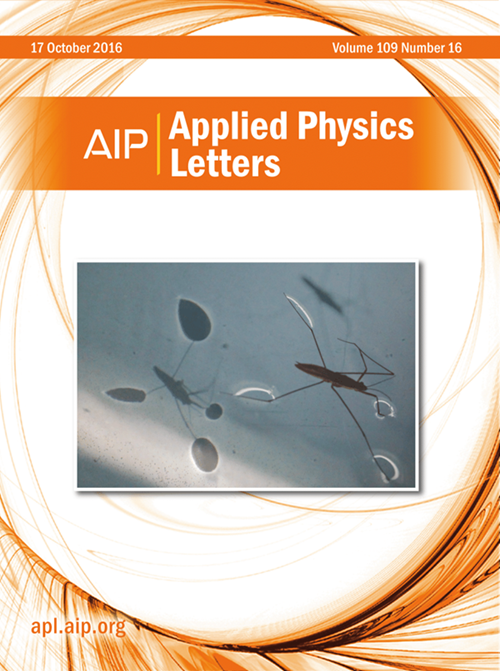Realizing p-type InSb with enhanced thermoelectric performance via Cd doping
IF 3.6
2区 物理与天体物理
Q2 PHYSICS, APPLIED
引用次数: 0
Abstract
InSb is a promising mid-temperature thermoelectric material, and its n-type thermoelectric properties have been widely studied. For thermoelectric device applications, it is necessary to have p-type counterparts. Here, we report the realization of p-type InSb with enhanced thermoelectric performance via Cd doping. A high-power factor of 1.91 × 10−3 W m−1 K−2 is obtained in p-type In0.93Cd0.07Sb at 723 K due to the increased carrier concentration. Moreover, the lattice thermal conductivity is decreased to 2.0 W m−1 K−1 owing to the significant multiscale phonon scattering and the suppressed bipolar diffusion effect. Ultimately, the peak zT value of 0.40 is achieved at 723 K in p-type In0.93Cd0.07Sb, which surpasses most contemporary p-type InSb materials. This study demonstrates a simple strategy for fabricating p-type InSb with high performance and holds promise in advancing the development of InSb-based TE devices.通过掺杂Cd实现热电性能增强的p型InSb
InSb是一种很有发展前途的中温热电材料,其n型热电性能得到了广泛的研究。对于热电器件应用,必须有p型对应体。在这里,我们报道了通过掺杂Cd来实现具有增强热电性能的p型InSb。在723 K时,p型In0.93Cd0.07Sb由于载流子浓度的增加而获得了1.91 × 10−3 W m−1 K−2的高功率因数。此外,由于明显的多尺度声子散射和抑制双极扩散效应,晶格导热系数降低到2.0 W m−1 K−1。最终,在723 K时,p型In0.93Cd0.07Sb的zT峰值达到了0.40,超过了大多数当代p型InSb材料。该研究展示了一种制造高性能p型InSb的简单策略,并有望推进基于InSb的TE器件的发展。
本文章由计算机程序翻译,如有差异,请以英文原文为准。
求助全文
约1分钟内获得全文
求助全文
来源期刊

Applied Physics Letters
物理-物理:应用
CiteScore
6.40
自引率
10.00%
发文量
1821
审稿时长
1.6 months
期刊介绍:
Applied Physics Letters (APL) features concise, up-to-date reports on significant new findings in applied physics. Emphasizing rapid dissemination of key data and new physical insights, APL offers prompt publication of new experimental and theoretical papers reporting applications of physics phenomena to all branches of science, engineering, and modern technology.
In addition to regular articles, the journal also publishes invited Fast Track, Perspectives, and in-depth Editorials which report on cutting-edge areas in applied physics.
APL Perspectives are forward-looking invited letters which highlight recent developments or discoveries. Emphasis is placed on very recent developments, potentially disruptive technologies, open questions and possible solutions. They also include a mini-roadmap detailing where the community should direct efforts in order for the phenomena to be viable for application and the challenges associated with meeting that performance threshold. Perspectives are characterized by personal viewpoints and opinions of recognized experts in the field.
Fast Track articles are invited original research articles that report results that are particularly novel and important or provide a significant advancement in an emerging field. Because of the urgency and scientific importance of the work, the peer review process is accelerated. If, during the review process, it becomes apparent that the paper does not meet the Fast Track criterion, it is returned to a normal track.
 求助内容:
求助内容: 应助结果提醒方式:
应助结果提醒方式:


